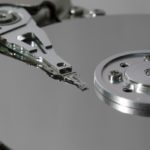From 20th to 24th May, one of our experts participated in 35th International Conference on Massive Storage Systems and Technology hosted at Santa Clara University in California. The conference started with a day of tutorials with two inspiring talks, one about the architecture of NAND-flash array systems and the other about the evolution of Non-Volatile Memories.
In the next days, the presentations were divides into two tracks:
- Invited Track for industry experts talking about various storage-related topics: from hard-drive disk construction to IOPS requirements in Hollywood film production. One of the presentations, opening “Storage in the Age of AI” section was related to Starfish Storage – a project being developed by 9LivesData (details).
- Research Track presenting the most recent storage research. It was a pleasant surprise that one of our papers (Romański, Systor 11) was mentioned during a presentation “Metadedup: Deduplicating Metadata in Encrypted Deduplication via Indirection” when effective solutions for deduplication were discussed.
Some of the topics got our special attention:
- NRAM is a nonvolatile memory made out of carbon nanotubes that was discussed during both tutorials and Invited Track. It is possible that in the future NRAM will replace DRAM, because it is nonvolatile and at the same time its price and performance are comparable to DRAM. High durability is the other advantage of NRAM – it can store data for a very long time (likely thousands of years) and can withstand extreme temperatures.
- LIPA is a first approach to combine machine-learning with deduplication. Reinforcement learning was used to optimize fingerprint indexing structure, thus system throughput was increased and memory requirements reduced. Probably a system that uses such an algorithm would be very hard to maintain and could act sub-optimally in corner cases, but the evaluation results were promising.
- XORInc surprised us with creative usage of In-Network Computation, which is typically used in computational-heavy problems like MapReduce, graph processing or machine learning. In XORInc, the computing power of programmable switches was used to reduce network utilization in erasure codes reconstruction. In some cases, the repair time was reduced 3 times.
During the informal “Lightning Talks” session we made a short presentation based on our experience with writing a custom file system. We shared an idea that in some cases writing code from scratch can be more cost-effective than reusing complex, general purpose code. The slides are available on the conference website: http://storageconference.us/2019/Invited/Jackowski.slides.pdf
MSST ’19 was an amazing opportunity to look at storage systems that we develop in 9LivesData from a different perspective. Presentations were selected carefully and they covered a wide range of topics from a bottom to the top of memory-storage pyramid.
The picture of the beautiful campus of SCU is licensed under the Creative Commons Attribution 3.0 Unported.




